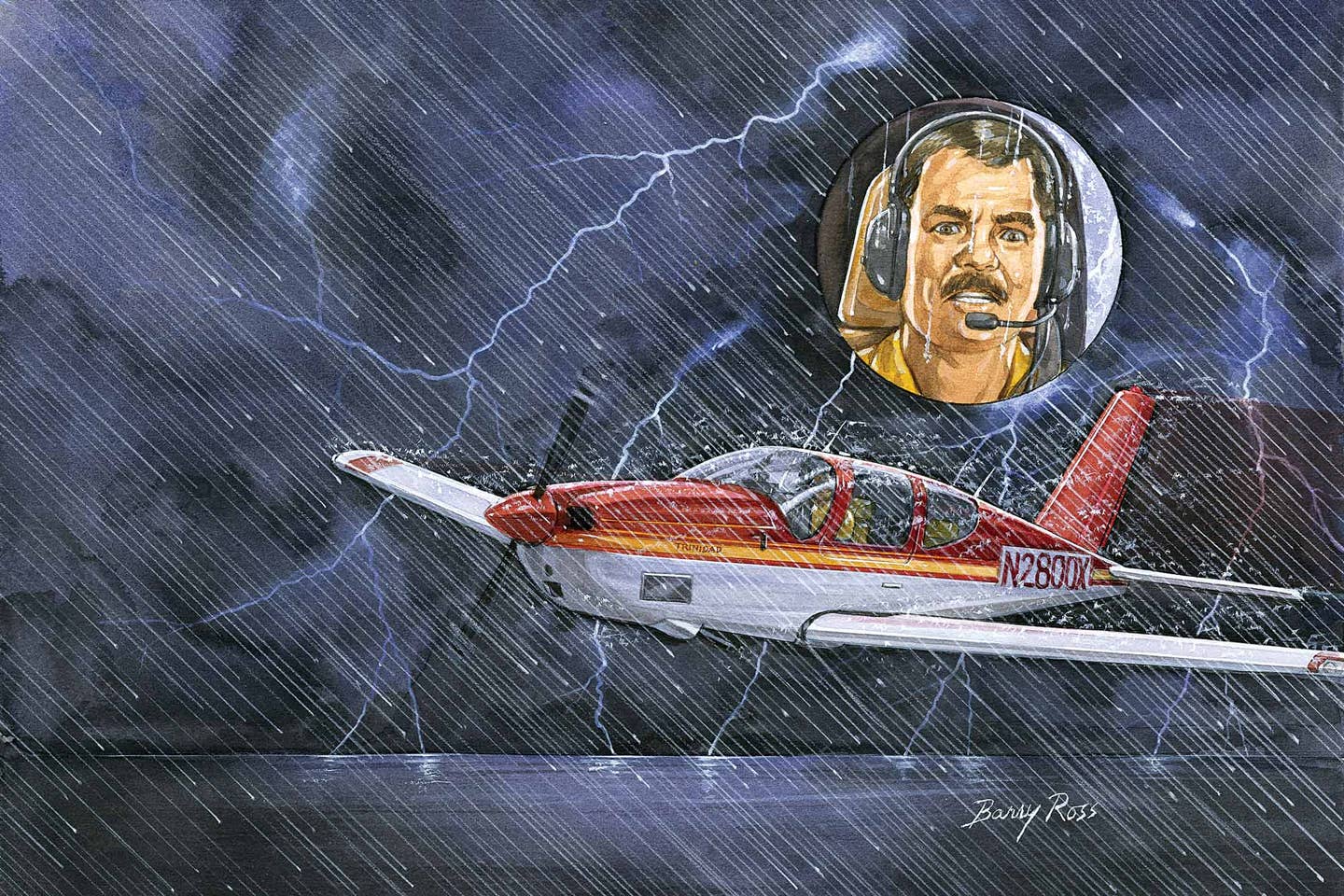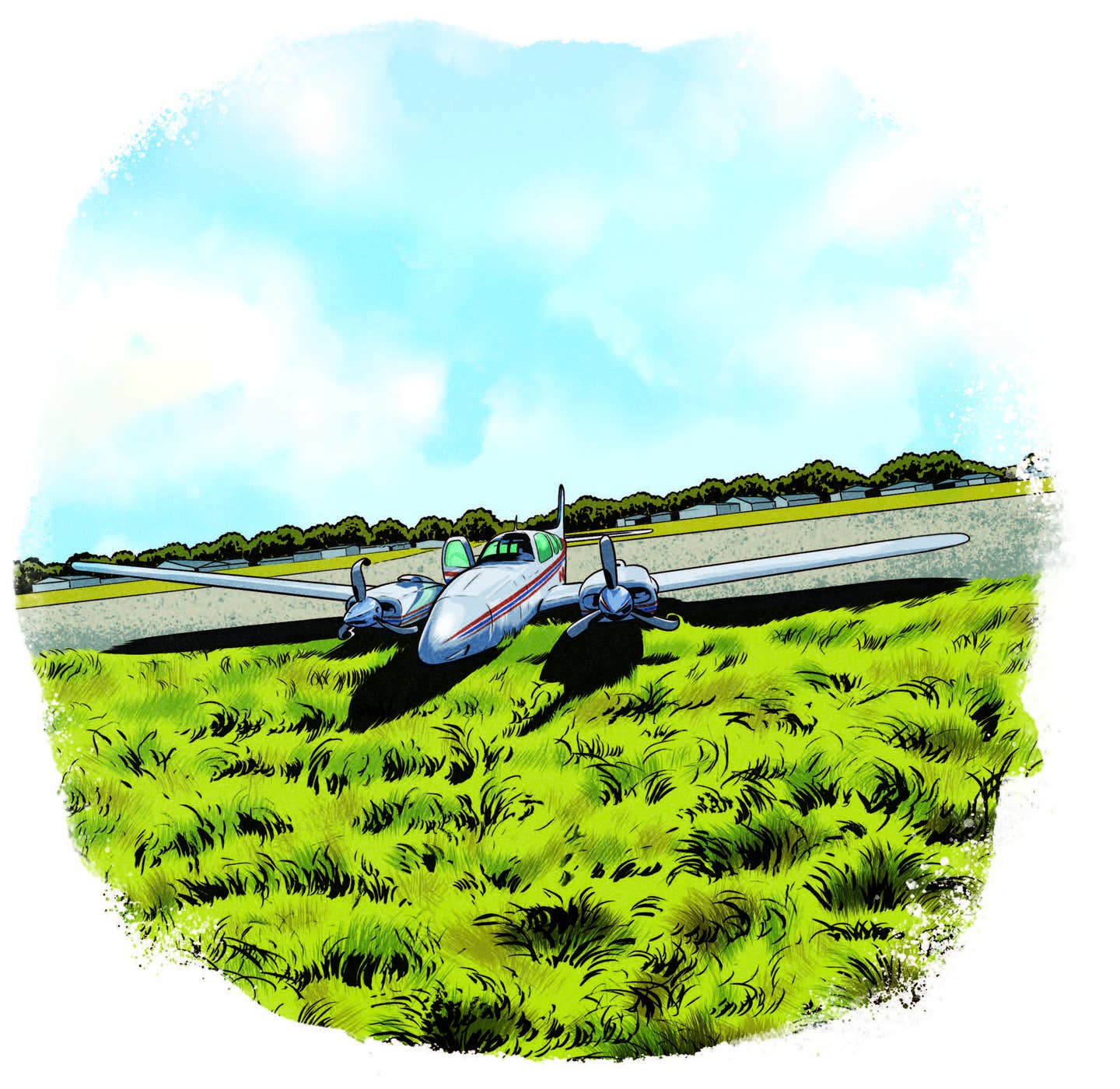
“My flight instructors did not prepare me for this; they instilled irrational fear in a well-meaning attempt to keep me out of danger.” Barry Ross
On a singular night in 1994, I learned that while there are many risks in flying, like in most other activities, succumbing to fear and panic is the worst possible way to deal with those risks. Flight training, while continuing to place the emphasis on risk avoidance, should highlight rationality in dealing with those risks, instead of reliance upon teaching risk avoidance by worsening our fears.
I had done a transoceanic ferry flight in a single before, flying my Piper Archer over the Atlantic to Germany and selling it there for a handsome profit. I had taken a course from experienced ferry pilots in Vero Beach, Florida, had a fat binder with all flight-planning details with me, and subsequently enjoyed an uneventful yet exciting experience.
Back in the U.S., I used the sales proceeds as a down payment to buy a Socata TB-21—a retractable I chose for its range and endurance as a reliable cross-country machine—and flew it several hundred hours in sometimes questionable weather but never got anything worse than the faintest trace of rime ice.
There was one weather phenomenon, however, that scared me to the core: thunderstorms. I had done my flight training in Amarillo, Texas, at the edge of Tornado Alley, where thunderstorms are at their worst. My flight instructors had instilled thunderstorm avoidance in me by teaching that flying into one of those beasts is essentially a death sentence. Avoidance is the only option. How to deal with one should you blunder inside was never really addressed. My only education on this topic came from Capt. Robert Buck’s excellent book Weather Flying. He had been through quite a few storms in DC-3s and had come out unscathed.
I took a job in Guam and thought it would be quite the adventure taking my airplane with me and being able to fly to the Micronesian islands. I went back to Vero Beach, got ferry tanks, the permit to be 20 percent over gross weight for the flight, and the helpful binder from those who had gone before me. With that, I set off over the Pacific.
The first leg from Santa Barbara, California, to Hilo, Hawaii, was long but completely uneventful. A few days later, it was time to tackle the next leg to Tarawa in Kiribati. I went to the flight service station and got a nice hand-drawn map from an obviously experienced meteorologist. He said the weather would be generally fine and conducive to the trip. Near the equator, just west of Johnston Island, nearly all the way to Tarawa, an area of cloudiness was penciled in.
I asked him about it, and he said, “Mostly cumulus, occasional showers and some cumulonimbus.”
“Cumulonimbus? I can’t fly. I will wait until there are none.”
“Well, then you will have to stay here forever, since there are always some Cbs—365 days of the year. It is the ITCZ [Intertropical Convergence Zone],” he replied.
With that cleared up, I took off that night, hoping my 3M Stormscope would keep me out of the cumulonimbus.
I departed in the evening, flight-plan altitude 8,000 feet (FL 080 over the ocean), hoping to arrive at Tarawa in the morning because daylight would make it easier to find the island. (Back then, GPS was new and coverage spotty, with not enough satellites for a reliable fix for several hours.)
I emptied my rear ferry tank first because I found this would make the airplane a little more stable. Everything was normal until just east of Johnston Island where I entered the forecast cloudiness. It was dark, in and out of cumulus, with occasional light rain but no turbulence except very light chop in some clouds. There were occasional stray dots on the Stormscope but nothing right along my direction of flight. In the approximate vicinity of Johnston Island, the clouds became more numerous but nothing threatening. I made my scheduled position report on the HF radio.
A few minutes later, things changed for the worse.
In an instant, the Stormscope lit up all around me. Flashes of lightning in rapid succession illuminated the cockpit. The worst rain I had ever experienced broke loose, accompanied by a deafening noise. The rain was so extreme, I thought the engine would ingest water and quit. Water dripped on me from the seals around the gull-wing doors.
Read More: I Learned About Flying From That
I went into full panic mode: “I have flown into a thunderstorm. It is over, I am dead—everyone told me so.” I disconnected the autopilot. I tried to raise oceanic control on the HF with the intent to declare an emergency, turn around and try to reach Johnston Island. Nothing but squeals of static and crackles on the HF…no one answered. I started a turn. I thought everything was hopeless anyway. I became absolutely paralyzed by fear. I expected the turbulence to rip off my wings, tear open my ferry fuel bladders, douse me in gasoline, and plunge me in flames to the ocean below any second now. I had never been that scared before.
Only…there was simply no turbulence. Some light chop, hardly even moderate—maybe even that accentuated by my panic. The deafening rain and blinding lightning continued, but I started to remember Buck’s book: Wings level. Hold a heading. Fly maneuvering speed. Straight ahead is the shortest way through. I stopped the turn, slowly going back to my original heading. I don’t know how long it lasted, but it was not more than a few minutes. The rain and lightning stopped as suddenly as it had started, and the sickle of the moon was the most welcome sight. I was through.
I slowly stopped hyperventilating, checked my altitude and heading and, after I regained some composure, called oceanic radio to make a pirep of thundershowers with heavy rain and light turbulence at FL 080. Mainly, I did that to find out whether they had received my frantic, useless and misplaced emergency declaration 15 minutes earlier. They did not say anything, so obviously not. I never thought I ever would thank God for radio static, but there it was. The rest of the flight to Tarawa and then on to Guam was uneventful.
I was never in any true danger. The turbulence was lighter than West Texas thermals on a sunny summer day. The rain was disconcerting but ultimately harmless. I was later told the vast majority of tropical thunderstorms over the ocean at this altitude behave that way: lots of rain and noise, lots of bark, very little bite. The Cb apparently had just reached the mature stage when I was in the middle of it.
The only risks came from my actions dictated by panic. Turning would only have kept me inside the Cb twice as long. There is even a chance I might have lost control in a turn because of my panic. Landing at Johnston Island after declaring an emergency would have been a nightmare; it was a highly restricted military base with no 100LL; I may never have been able to take off again. It would not have solved any problems, instead turning what was nothing but a minor annoyance into a truly bad situation. The controller, far away in California, could not have helped me in any case. All there was to do was keep cool and fly the airplane.
My flight instructors did not prepare me for this; they instilled irrational fear in a well-meaning attempt to keep me out of danger. And while it is of utmost importance to avoid thunderstorms, it is also important to know what to do if you should stumble into one: try to keep calm and keep control of the airplane. I can only thank Buck and his excellent book for helping me control my destructive, irrational panic that night.
This story originally published in the December 2019 issue of Flying Magazine

Sign-up for newsletters & special offers!
Get the latest FLYING stories & special offers delivered directly to your inbox






